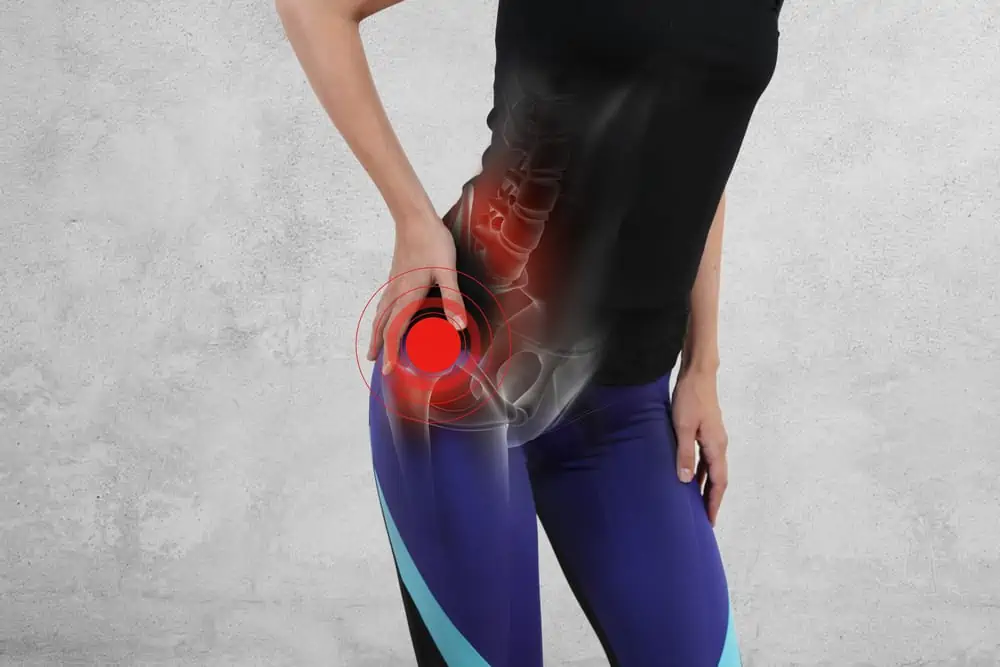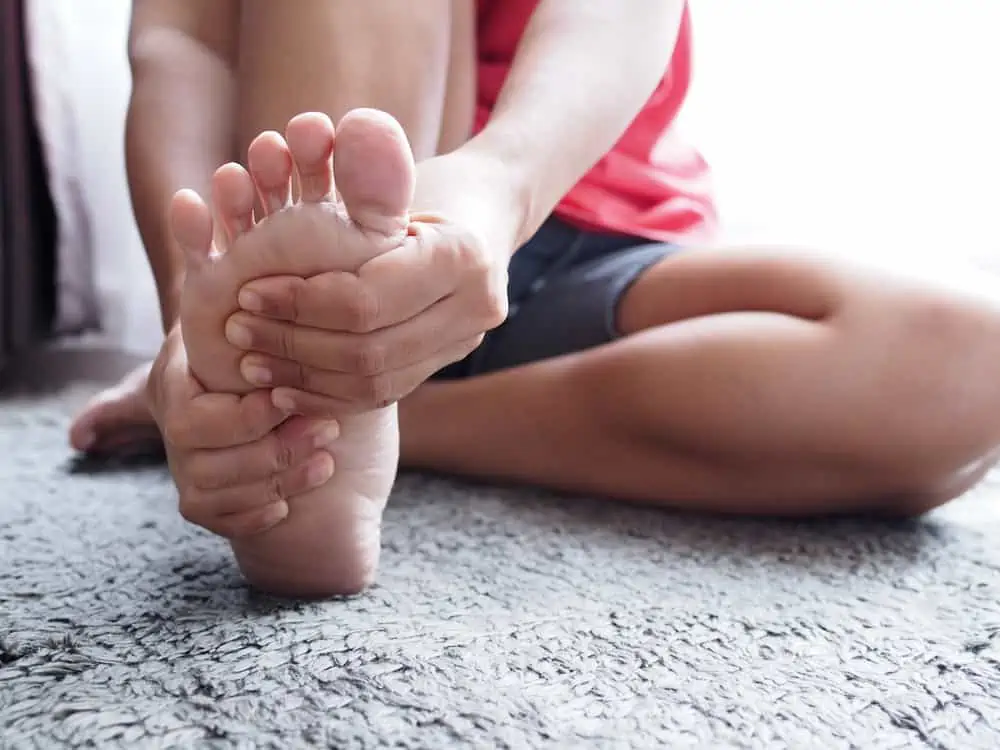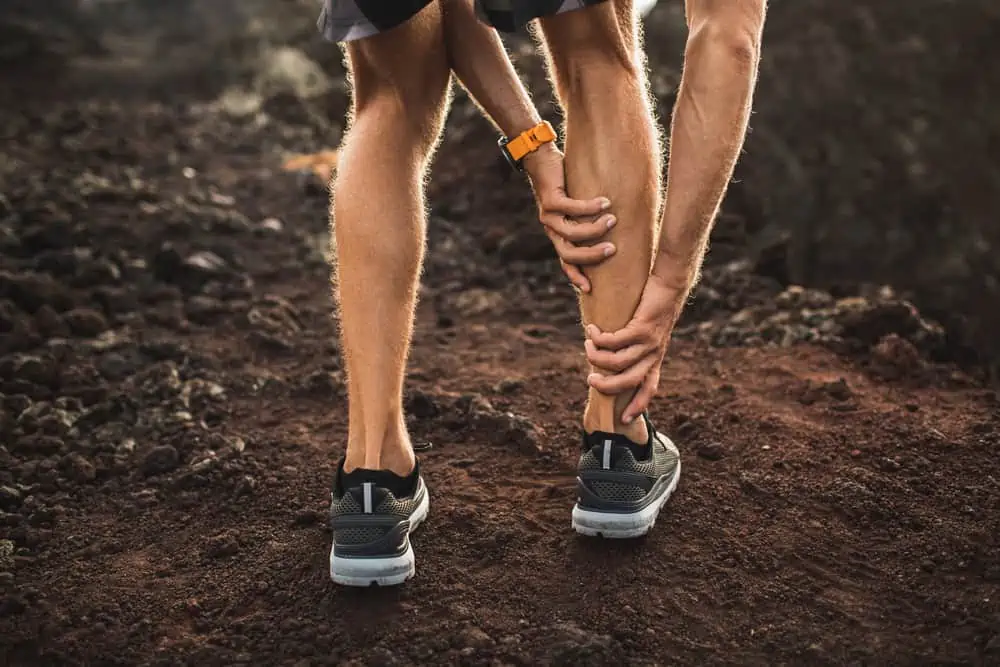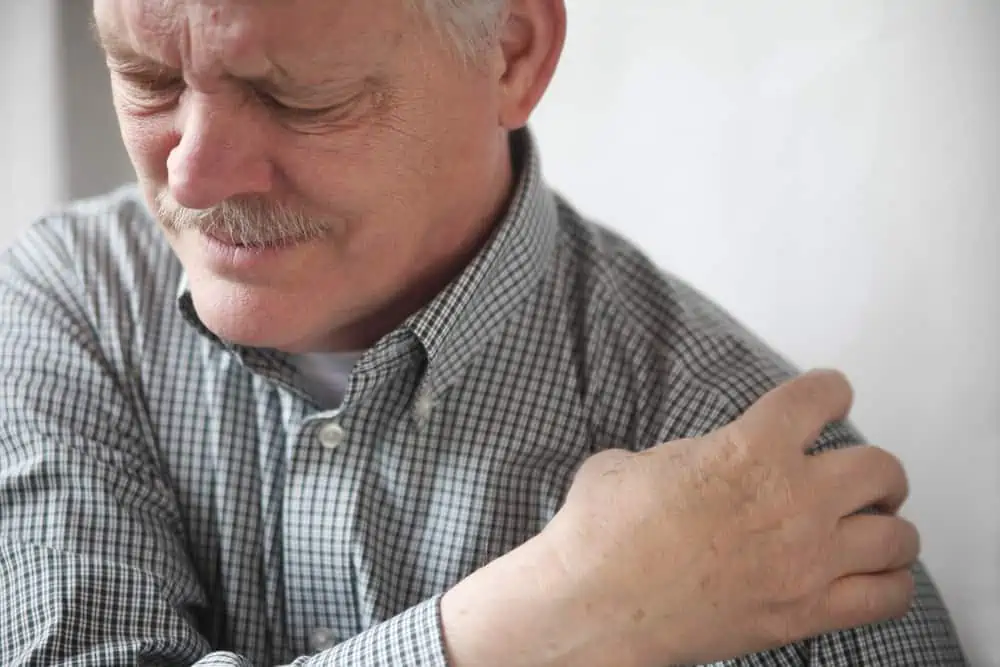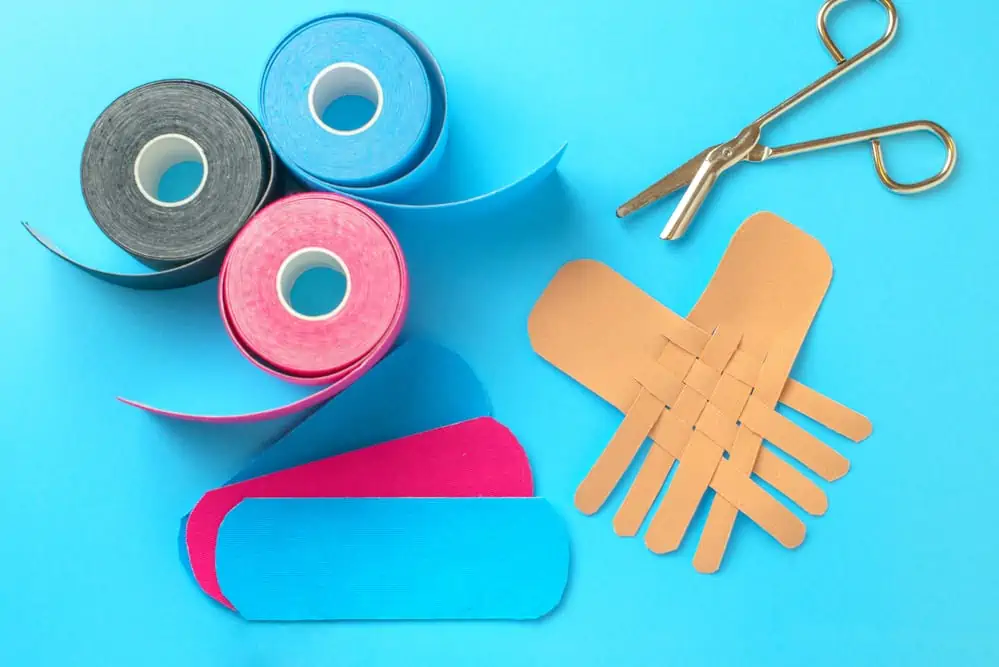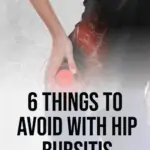This post may contain affiliate links. If you click through a link and make a purchase, I may receive a commission at no additional cost to you. As an Amazon Associate, I earn from qualifying purchases. Read the full disclosure here.
Hip bursitis can be a painful and limiting condition. It can be frustrating to try to figure out what helps and what is simply making your pain worse.
In this article, you’ll learn the major things to avoid with hip bursitis so you can start feeling better.
Let’s get to it!
Disclaimer: This content is for educational purposes and is not medical advice. Read the full disclaimer.
What is hip bursitis?
Bursitis is inflammation of the bursa. Bursa are small fluid-filled sacs that are located in many places around the body and function to reduce friction between other moving parts, such as tendons.
Bursitis is common in the shoulder, elbow, hip, and knee. Hip bursitis, also commonly referred to as trochanteric bursitis, is inflammation of the trochanteric bursa, located at the outer area (lateral side) of the hip joint.
Another term that floats around when describing lateral hip pain is greater trochanteric pain syndrome, which is thought to be a combination of bursitis and gluteal tendinopathy.
In reality, this is probably a more accurate description since surrounding tissues can quickly become involved any time there’s pain, especially with chronic bursitis.
Other conditions, such as radicular pain from the low back, can also cause outer hip pain. An evaluation by a doctor or physical therapist should be able to tell these two conditions apart. And, of course, it’s always possible for both to co-exist.
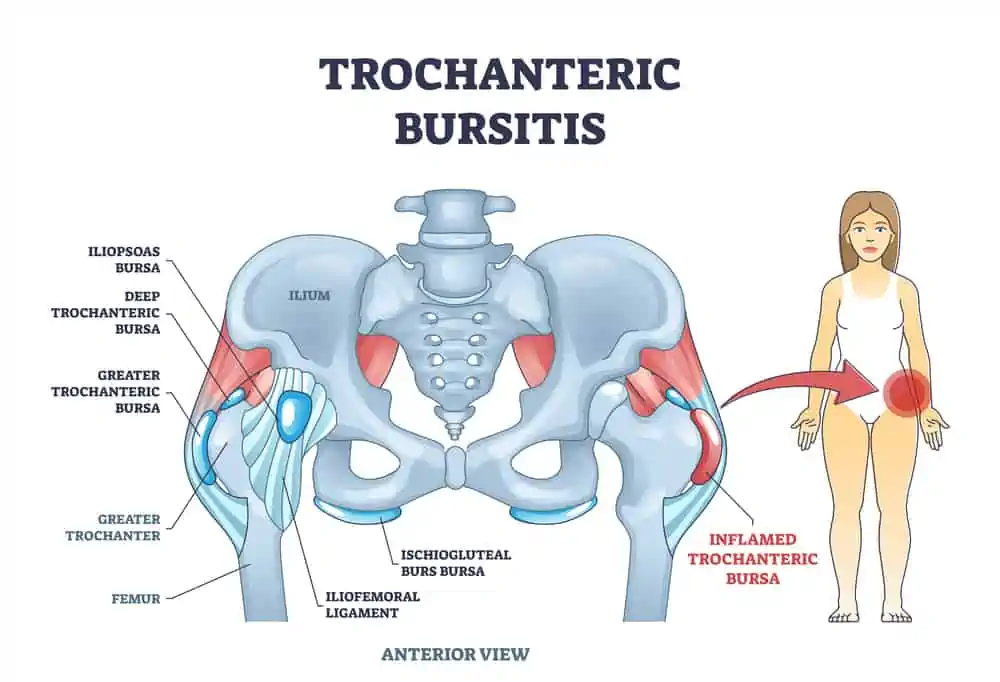
Symptoms of hip bursitis
- Lateral (outside) hip pain, worse with movement and lying on the affected side
- Hip bursitis symptoms are typically localized to the side of the hip, but may begin to extend to other areas like the low back and thigh if not treated and movement compensations begin.
What causes hip bursitis?
Bursitis is often the result of overuse and can occur when there’s repetitive movement, especially in conjunction with poor movement patterns or muscle weakness leading to compensation.
Hip bursitis can also occur after trauma to the hip or in conjunction with other diagnoses that affect the hip joint or muscle strength surrounding the hip, such as hip arthritis or lower back problems.
Outer hip pain is also common following a total hip replacement due to scar tissue, hip muscle weakness, and limited mobility in the weeks following surgery.
Structural changes that result from conditions like scoliosis or leg length discrepancies may also predispose someone to hip bursitis due to the change in alignment and pressures on various tissues.
6 things to avoid with hip bursitis
When dealing with hip bursitis pain, it can be difficult to identify what movements are making your pain worse. This can be pretty frustrating when you’re trying to figure out what makes the pain better or worse.
With any pain, smart activity modification (not complete rest) is often the key to becoming pain-free.
Here are some usual culprits to avoid with hip bursitis so you can start feeling better.
Lying/sleeping on the affected side
Lying with direct pressure on the outside of the affected hip can often be painful with trochanteric bursitis. Try lying on your back or the opposite side.
When lying on the opposite side, try placing a pillow between the knees to keep the top leg elevated. This helps keep the hips in line and avoid extra pressure (and pain) on the inflamed bursa.
This between the knees pillow or body pillow are great options.
Hip bursitis exercises to avoid – repetitive movement
Outer hip pain is common in activities such as running or cycling, which tend to be repetitive movements in one plane. There’s not any lateral movement (side to side) with either of these activities.
IT Band syndrome also tends to be common in these populations, which may also accompany hip bursitis.
Too much sitting
You don’t have to be an athlete to develop hip bursitis. Lack of movement or being sedentary may also contribute to developing hip bursitis and other assorted aches and pains.
And no, just switching to a standing desk doesn’t cut it.
For health benefits, aim for at least 150 minutes of moderate-intensity exercise each week, with at least two days including strengthening exercises for major muscle groups.
Related reads: How To Be More Physically Active & Secrets To A Well-Rounded Fitness Program
Foam rolling over the lateral hip
It may be tempting to grab a foam roller and go to town on your hip pain. Still, foam rolling is only appropriate for certain tissues, like muscles.
Bursa are non-contractile tissues and can’t be “worked out” like a tight muscle can. Trying to foam roll over an inflamed fluid-filled sac will likely irritate things more.
If you’d like to use a foam roll, avoid the outer side of the hip directly over the bursa and focus on other muscles in the region, such as the glutes and quads, to relieve some feelings of tension.
Using a massage gun directly over the inflamed bursa
Similar to a foam roller, using a massage gun directly over the inflamed bursa is not a good idea.
Instead, use your massage gun on the muscles surrounding the area for some pain relief.
You can read more about the differences between foam rollers and massage guns here.
Ignoring the pain
It can be tempting to ignore symptoms and hope your pain goes away. Let’s be real; we’re all busy and squishing a doctor’s appointment into a jam-packed schedule is probably the last thing on your mind.
Ignoring musculoskeletal pain often leads to compensations and additional soreness.
If you’re super busy, inquire with your health insurance or employer about digital physical therapy and other telehealth options to fit treatment into a busy schedule.
How is hip bursitis treated?
From the physical therapy side, treating hip bursitis is often a combination of stretching and strengthening exercises to decrease pressure on the inflamed bursa and restore good strength and mobility.
Smart activity modification to avoid frequent exacerbation of symptoms is also a large component. Continuing with the same bad habits that got you into pain in the first place is not a great idea.
Passive interventions such as ice packs, heat packs, or pain-relieving gels may be helpful in the short term to take the edge off of the pain and help get you moving in beneficial ways. Just be aware that passive interventions (things that require no work on your part) will only get you so far.
Tissues need to move and be loaded progressively to restore full function and avoid chronic injuries.
Physical therapy should include a variety of specific mobility, flexibility, and strengthening exercises for the surrounding area as well as full body movements to regain good movement patterns.
Your doctor may also recommend over-the-counter medications, prescription anti-inflammatory medication, or even corticosteroid injections. Surgery may be a consideration for cases that don’t respond well to conservative treatments.
But surgery is never a guarantee, and it’s best to exhaust your conservative efforts first before jumping into more invasive procedures. Your doctor can help you decide what’s best based on your individual circumstances.
Related article: Why Are My Hip Flexors Always So Tight?
How long does hip bursitis take to heal?
Generally, hip bursitis takes 6-12 weeks to fully heal; however, this timeline is also affected by how soon the problem is addressed, as well as other medical conditions and if you’re making smart movement modifications.
Of course, this doesn’t mean that you’ll be in the same amount of pain for that length of time. As long as you’re being proactive, you should start to notice a gradual decrease in pain and an increase in function over time.
The most important thing is to be consistent with your prescribed medications and exercise plan. Exercise takes time to see results and, in some ways, is just like a medication regimen. If you don’t take your medication, it doesn’t work. The same is true for exercises – If you don’t do them consistently, they don’t work!
An important note about healing for musculoskeletal issues is that sometimes the pattern isn’t linear, and that’s completely normal. Some days may be more painful, which is why it’s important to monitor your symptoms and stay consistent.
Wrapping up
Hip bursitis can be painfully annoying and limit your ability to enjoy life.
Smart activity modifications are an essential part of conservative treatment. The sooner you get symptoms addressed, the faster you can start feeling better.

